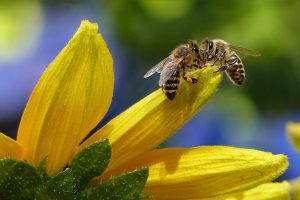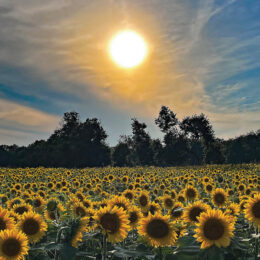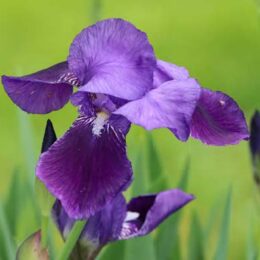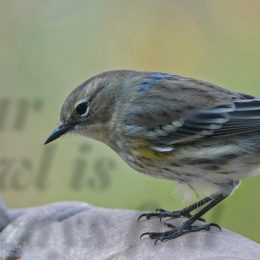By Pamela A. Keene

Photo by Pixabay
If not for bees and other pollinators, the world would starve.
Those buzzing honeybees and bumblebees, colorful butterflies and quick-darting hummingbirds have a huge job to perform: pollinating plants that grow into the fruits and vegetables we eat and the blossoms we enjoy.
But to get a bountiful crop to harvest, gardeners need to feed the pollinators.
Dolores Savignano, climate change coordinator with the U.S. Fish and Wildlife Service Division of Fisheries and Habitat Conservation, encourages people to make their landscapes pollinator-friendly.
“Plant native plants and provide nesting sites,” she said. “Native pollinators are adapted and attracted to native plants. Even though the cultivated varieties of natives are sometimes more attractive to humans in your landscape, they may not have all the traits of their native relatives.”
Many hybrid plants or hybrid varieties of natives have been developed with their appearance in mind, but little consideration for the plant’s ability to produce nectar, pollen or fragrance. This is especially true of blooms that have been bred to have double flowers, such as new colors of coneflowers and some daisies.
“Pollinators play a crucial role in the health of the ecology, and even more so in our food sources,” said Savignano. “More than 75 percent of all crops require natural pollination.”
Honeybees enable the production of at least 90 commercially grown crops in North America, according to a White House fact sheet. Globally, 87 of the leading 115 food crops are dependent on animal pollinators, the fact sheet noted.
“Bees are the real workhorses in the world of pollination,” said Gail Langellotto-Rhodaback, associate professor with Oregon State University in Urban and Community Horticulture and statewide master gardener program coordinator.
Here are tips for making your garden more “bee friendly”:
• Consider plants with a range of bloom seasons from spring through fall. Include both daytime and night-blooming species.
• Pollinators more easily find plants in clumps rather than single plants. This also makes your garden more attractive and easier to care for.
• Choose native varieties of plants rather than their “prettier” hybridized relatives.
• Mix in annuals, perennials, flowering shrubs and trees.
• Check with your area’s extension office or a Master Gardener for a list of the best natives to plant to attract your region’s pollinators.
• Provide a water source for pollinators. You can put a bird bath directly on the ground or install a drip irrigation line. Add a bit of salt or wood ashes to the damp area.
• Avoid using pesticides. If you must use them, read the label for the least-toxic to wildlife. Spray at night when bees are not active.
• Learn more about pollinators by reading guidebooks about bees, butterflies and hummingbirds The North American Pollinator Protection Campaign, which spearheads National Pollinator Week, is one place to start: www.pollinator.org.
Editor’s Note: June 19-25, 2017, has been designated National Pollinator Week



